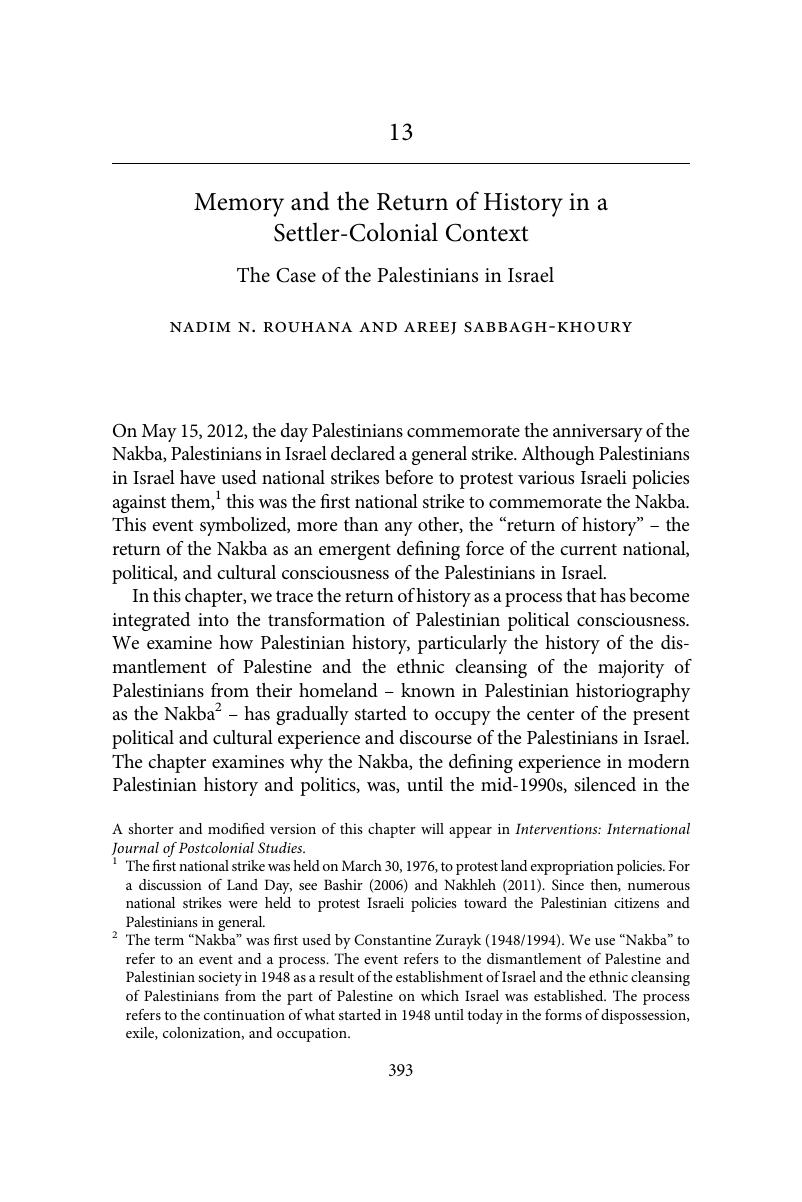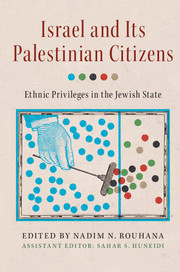13 - Memory and the Return of History in a Settler-Colonial Context
The Case of the Palestinians in Israel
from Part III
Published online by Cambridge University Press: 16 February 2017
Summary

- Type
- Chapter
- Information
- Israel and its Palestinian CitizensEthnic Privileges in the Jewish State, pp. 393 - 432Publisher: Cambridge University PressPrint publication year: 2017
References
- 2
- Cited by



